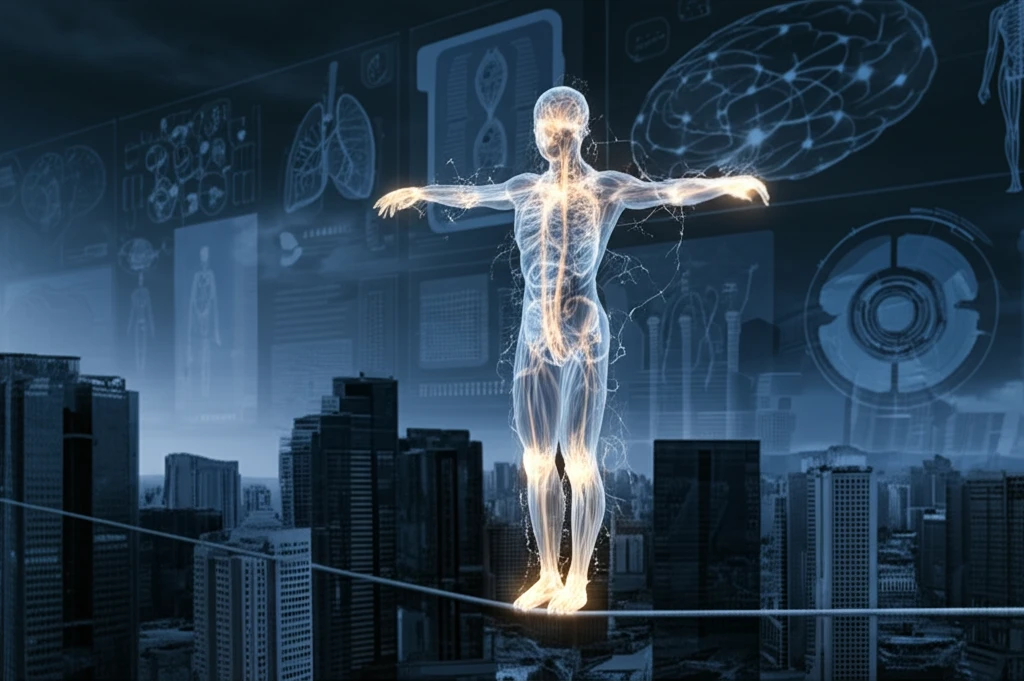
Unlock Your Body's Secrets: How Posture Affects Everything
"Balance isn't just about standing straight. Discover how postural adjustments impact motor skills and overall well-being, influencing everyone from athletes to older adults."
We all strive for balance in our lives, but what about the literal balance that keeps us upright and moving? Maintaining balance is fundamental to our daily activities and how well we perform them. Think about it: every time you reach for a cup of coffee, walk down the street, or even sit at your desk, your body is constantly making tiny adjustments to stay stable.
Humans are constantly under the influence of gravity, which, without compensation, would lead to postural destabilization. External forces, such as movement in a train, can also affect balance. Even voluntary movements like moving your fingers can create internal forces that require compensation. To remain steady, the body uses coordinated muscle activation patterns known as "postural adjustments."
This article explores the fascinating link between these subtle postural adjustments, our ability to balance, and our overall motor performance. We'll examine recent research involving diverse groups, from young athletes to older adults, to understand how postural control works in both healthy individuals and those with specific health conditions.
How Do Postural Adjustments Work?

Recent studies highlight the intricate mechanisms behind postural adjustments and their connection to various sensory inputs. Vision, the vestibular system (inner ear), and mechanoreceptors (sensory receptors in muscles and joints) are critical in maintaining balance. How our bodies weigh and integrate these signals determines our postural control.
- Ankle Vibration Studies: Vibrating tendons around the ankle can affect a person's ability to point accurately at a target, showing how proprioception (body awareness) influences motor planning.
- Ehlers-Danlos Syndrome (EDS) Research: EDS, characterized by hypermobility and impaired proprioception, alters how people perceive verticality and maintain postural stability. Somatosensory orthotics (compressive garments and insoles) can help offset these impairments.
- Age and Activity Level: Older adults are more susceptible to balance disturbances on unstable surfaces compared to younger adults, likely due to age-related changes in the feet.
Why Understanding Posture Matters
Understanding the mechanisms behind postural control is crucial for developing new and better ways to improve stability and motor performance. This knowledge has wide-ranging applications, from helping people with neurodegenerative conditions to enhancing athletic performance and preventing falls in older adults. By focusing on the interaction between postural control, movement, and cognitive function, we can significantly improve overall well-being and quality of life.
